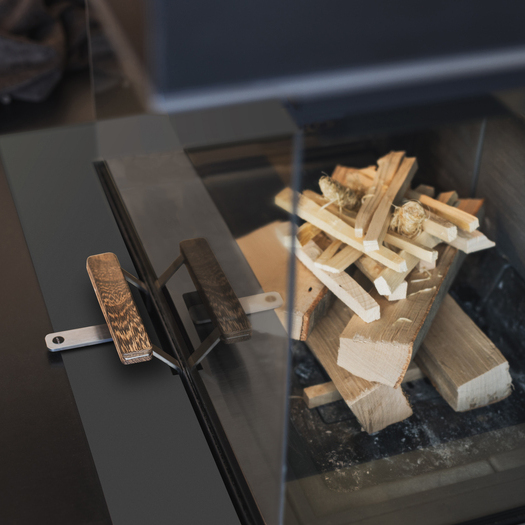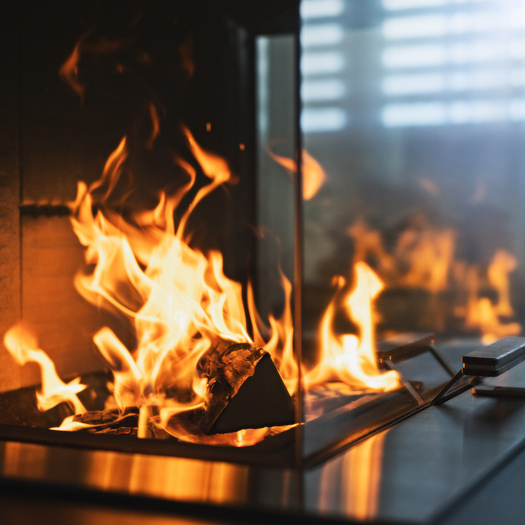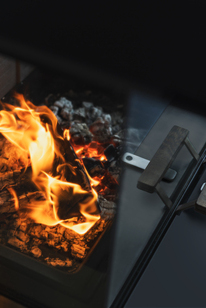You see the contents for the location:
Fire Tips
Without oxygen, there is no fire - so if you want a beautiful open fire, you must first and foremost get the air supply under control.
The right dosage and air inlet positions adapted to the firebox are crucial for the air supply. Manufacturers of high-quality fireplaces develop such sophisticated air systems, which are controlled manually with just one lever.
Fully automatic control systems such as ElectronicAIR™ have also been available for some years now. In addition to optimised air flow, an exhaust system that is matched to the fireplaces is a basic requirement for efficient combustion.
Combustion in modern log firing takes place in three phases:
Phase 1 - lighting the fire
Information on the correct amount and size of firewood can usually be found in the stove's user manual. So-called primary air is required for lighting the fire. This is fed directly to the fire in large quantities in the lower part of the firebox to ignite it quickly and make it grow large. It burns brightly and intensively. The air regulator is fully open. If there is an automatic air regulation system, this ensures the correct air supply. A strong fire at the beginning is important. It quickly warms up the stove and the flue gas system, creating a draught in the fireplace. This favours a beautiful and clean burn.
Phase 2 - the firing phase
In the firing phase, the fire shows its best side. The primary air is greatly reduced so that the wood does not burn too quickly. The secondary air takes its place. Depending on the stove model, this is controlled manually or automatically. In high-quality stoves and fireplace inserts, the secondary air is guided in a controlled manner from top to bottom over the ceramic glass pane. This constant flow of air - known as window rinsing - effectively prevents sooting of the pane. During this phase, the stove emits maximum radiant heat into the room and you can really enjoy the crackling and blazing fire.




Phase 3 - the glowing phase
The blazing flames are extinguished. There are smouldering, still warm embers in the firebox, spreading a cosy atmosphere. In this phase, you decide whether you want to add new wood logs and start again with phase 1 or whether you want to let the embers slowly burn out.
Tertiary air
The most advanced stoves and fireplace inserts feed tertiary air into the firebox throughout all firing phases. A small amount of fresh air is fed in at flame height via a sophisticated system, causing the gases to be post-combusted. This double combustion leads to even cleaner combustion overall with hardly any measurable fine dust emissions
Almost every Attika specialist partner has a stove or fireplace insert in operation in their showroom and can show you and explain the various phases of combustion live.